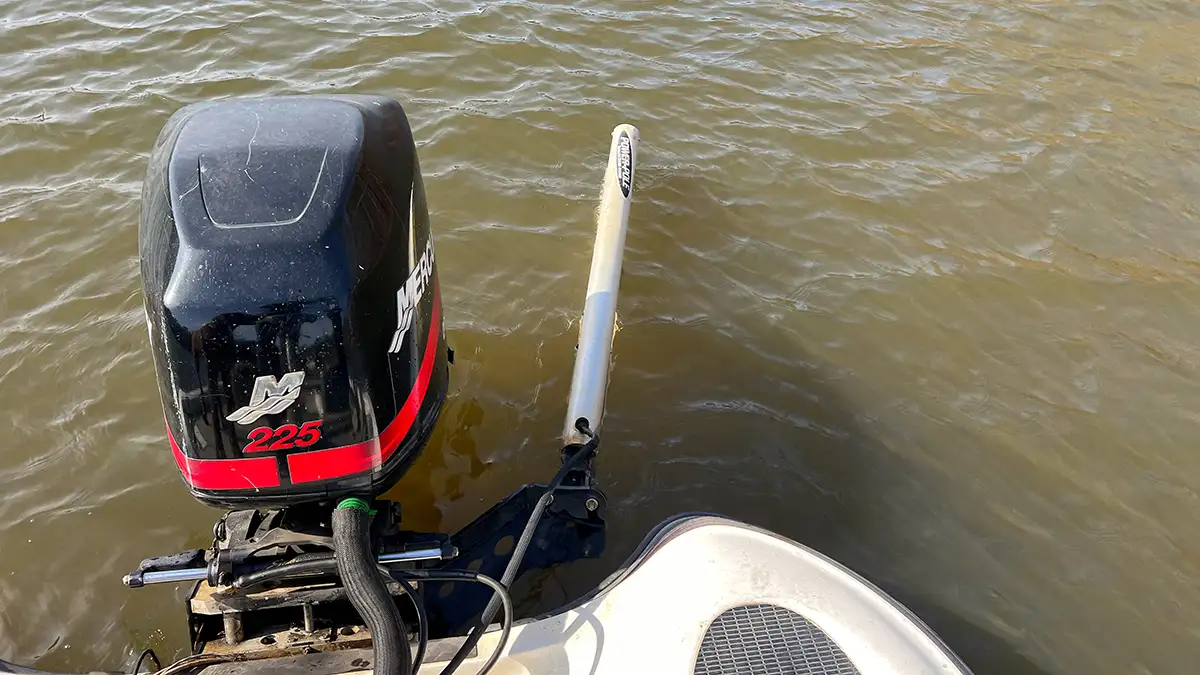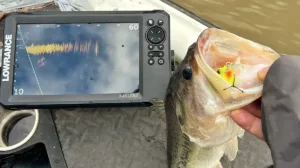I was unbelievably blessed by the wife and family of a dear friend upon his passing a couple years ago. I’ve written about it before, but Neal Webster was like a grandaddy to me. And when he passed, his wife gave me his 2001 Triton. At the time, I was working hard to payoff a mountainous molehill of debt that I had accrued in a previous life. Which, praise God, is gone now minus what’s owed on a house and land. So I have an older boat and thought I would share how I make it fish a lot newer with the best upgrades for fishing boats.
In my earlier effort to payoff my debt, I had gotten rid of my previous newer boat. So, I had no boat of my own at the time. I believe whole heartedly that this boat now is a grace from God as is that family that I didn’t deserve, but I’m oh so thankful for.
All this said, my ride has surpassed the legal voting age now in all 50 states. And the motor could even guzzle down any fluid of its choice without reprimand, if it were so inclined—like it does gasoline at the moment.
Thus, upgrades are in order. There are some that Neal did to the boat while he still had it, and some more that I am researching and working towards now. So, I thought it would be a good idea to go through what I believe to be the five best upgrades you can make to an older rig. Here they are.
TROLLING MOTOR
Nothing is put through more rigorous torture day in and day out than a trolling motor, especially by a shallow water fisherman like myself (and like Neal). While he had the boat, Neal upgraded the trolling motor twice, once from a very basic Minn Kota trolling motor to a Minn Kota Fortrex. And again a few years ago to a Minn Kota Ultrex.
Not only do trolling motors wear out over time, no matter the brand or quality, but the advancements in power, efficiency and technology have been massive over the more than two decades since my boat left the assembly line. Upgrading to a trolling motor like the Ultrex, with extra power and advanced features like Spot Lock, is the best thing you can do in my opinion.
FISH FINDERS
Though I do believe that an upgraded trolling motor is the most impactful addition that can be made to a boat, the gap between that and new fish finders is ever-so narrow, and even negligible for the offshore angler. The advancements here again in the tools and technologies have been mind-blowing over the last decade. Not only those in forward facing sonar, but also in traditional 2D sonar, side imaging, down scan, mapping and the processors used to operate it all.
Neal tried a few different graphs along the way, finally settling for a Lowrance Elite 9 at the dash and a Hummingbird Helix 9 on the bow. These have been very beneficial, though I will say that it’s best to choose graphs from the same brand, so that they can be linked together and share information like waypoints, routes and mapping.
I’m currently researching the best budget-friendly (if you’ll excuse the boldness to use such a term here) forward-facing sonar for my rig; reaching out to Humminbird, Lowrance and Garmin to see what they have to offer for the angler with an older rig who would like to peer beneath the surface, without having to mortgage his house to do so. Look for an in-depth article related to this in coming weeks.
LITHIUM BATTERIES
Lithium batteries can be used to crank the outboard, power trolling motors and run livewells, graphs and other functions of a boat far more effectively than lead acid batteries ever could or can— primarily because they weigh a fraction of what lead batteries do.
Though lithium batteries are a costly investment to be sure, one 36-volt battery (which would be needed to power a 36-volt trolling motor) would weigh around 45 pounds. And this one battery could do the work of the three 12-volt lead acid batteries (which could weigh as much as 70 pounds apiece, for a grand total of 210 pounds).
So, just swapping out the trolling batteries and cranking battery to lithiums could easily result in a net loss of over 200 pounds of weight in the boat. That’s a whole other person.
Again, these batteries are pricey across the board. But the benefits are amazing in power and weight and most come backed by a 10-year warranty, where lead batteries do good to last a year or two now. If you plan to have your boat another 10 years, the math works out to where the one time investment on lithium batteries is about the same as what it would cost to swap batteries time and time again over the next decade.
This is another upgrade I haven’t made yet, and an area I’m also researching heavily to first determine the best option for powering my 24-volt Ultrex, and then to replace my cranking battery as well down the road.
SHALLOW WATER ANCHORS
Whether you fish primarily deep or shallow, shallow-water anchors like Power-Poles or the two options from Minn Kota (Talons and Raptors), can be a massive upgrade for any boat. Neal had already installed a Power-Pole on my boat years ago, and I regularly use it to hold myself in shallow water while fishing.
But even when not actively fishing, I like to use my shallow-water anchor to hold the boat in place while I’m working on tackle and especially when I launch and load the boat. My boat has a keel guard along the hull, so I can beach the boat on the ramp or adjacent to it when I’m loading and unloading the boat. And while you could certainly do this without a shallow water anchor to hold the boat there, it’s nice to know that the rig will be there when I return, and not floating off as I watch from shore scratching my head and weighing my options.
MARINE OUTBOARD ENGINES
The coup de grâce to the Achilles heel of any older boat is to re-power the rig with a new outboard. Now, while this is by far the most expensive investment you can put into an older boat, it’s one that will pay huge dividends in the event you want to sell it someday, and might even make the most sense to do in some cases.
Say the powerhead goes out on my 2001 Mercury Optimax next week. While I don’t have the $5,000 or $6,000 it would likely take to fix it lying around allocated to such an unfortunate happenstance, it would be worth considering just saving up even more to put a whole new engine on the boat.
For three or four times as much, which is no doubt a whole lot of money, I could put a brand new 225 Pro XS on the boat and cut out oil costs, poor gas mileage and the inevitable plethora of other repairs that will be necessary on my current, well-seasoned outboard.
Again, it would be a tough decision to make, but worth considering. Especially if your hull and the rest of the boat is in fantastic shape (which mine is not), and you were looking at keeping it another 10 years or more.
WRAPPING IT ALL UP
The last thing I want to do in putting this piece out there is to stir up discontentment in anyone’s heart. Fishing can turn into a measuring match in a heartbeat if you’re not careful, lusting over all the new toys and gadgets that other anglers post about on their social media—many leveraged to the hilt financially no doubt, counting on a $200 pot tournament win to make the next payment.
Please, don’t put yourself in that position just to have the latest and greatest gadget. Consider yourself, like I do, to be unbelievably blessed and fortunate to have a boat to fish out of; and for the health to go fishing. And ultimately that figuring out how to make the boat better is one of your chief concerns in life at the moment.
But if you are pondering pouring an investment into your rig, I hope that this conversation helps spur you in the right direction. I’ll keep you posted in coming months on the progress with my rig.










![[VIDEO] How to Install the Garmin Force Pro Trolling Motor](https://www.wired2fish.com/wp-content/uploads/2025/06/trolling-motor-install-300x169.webp)











